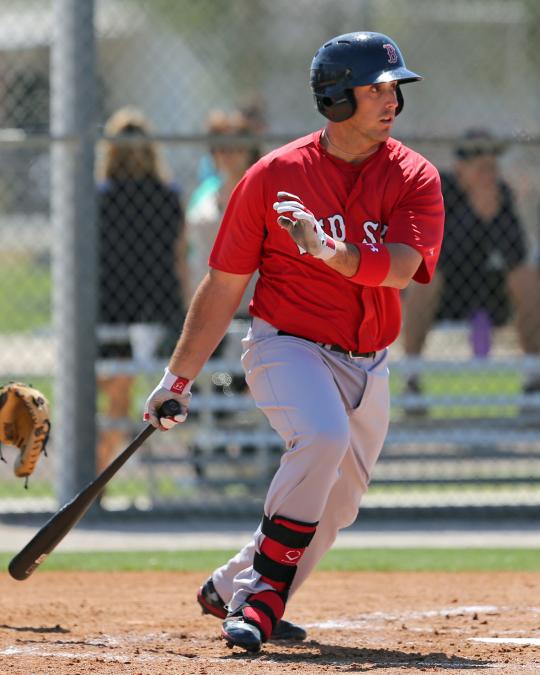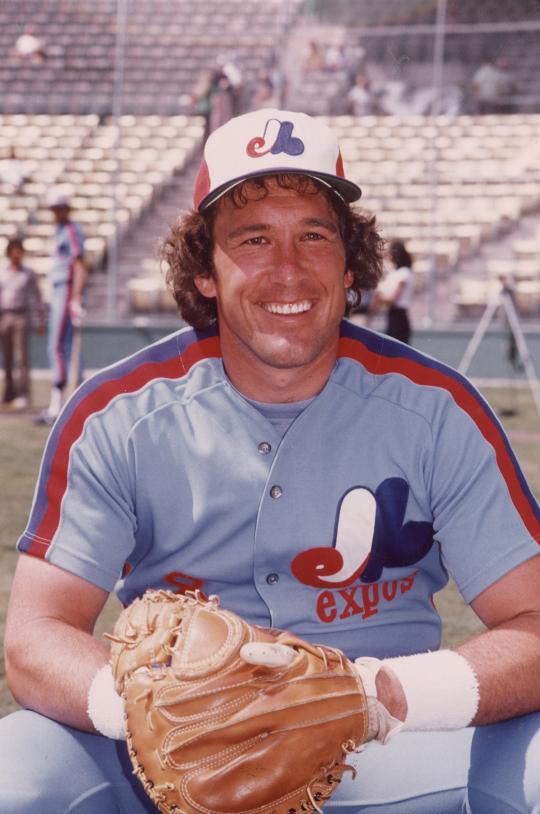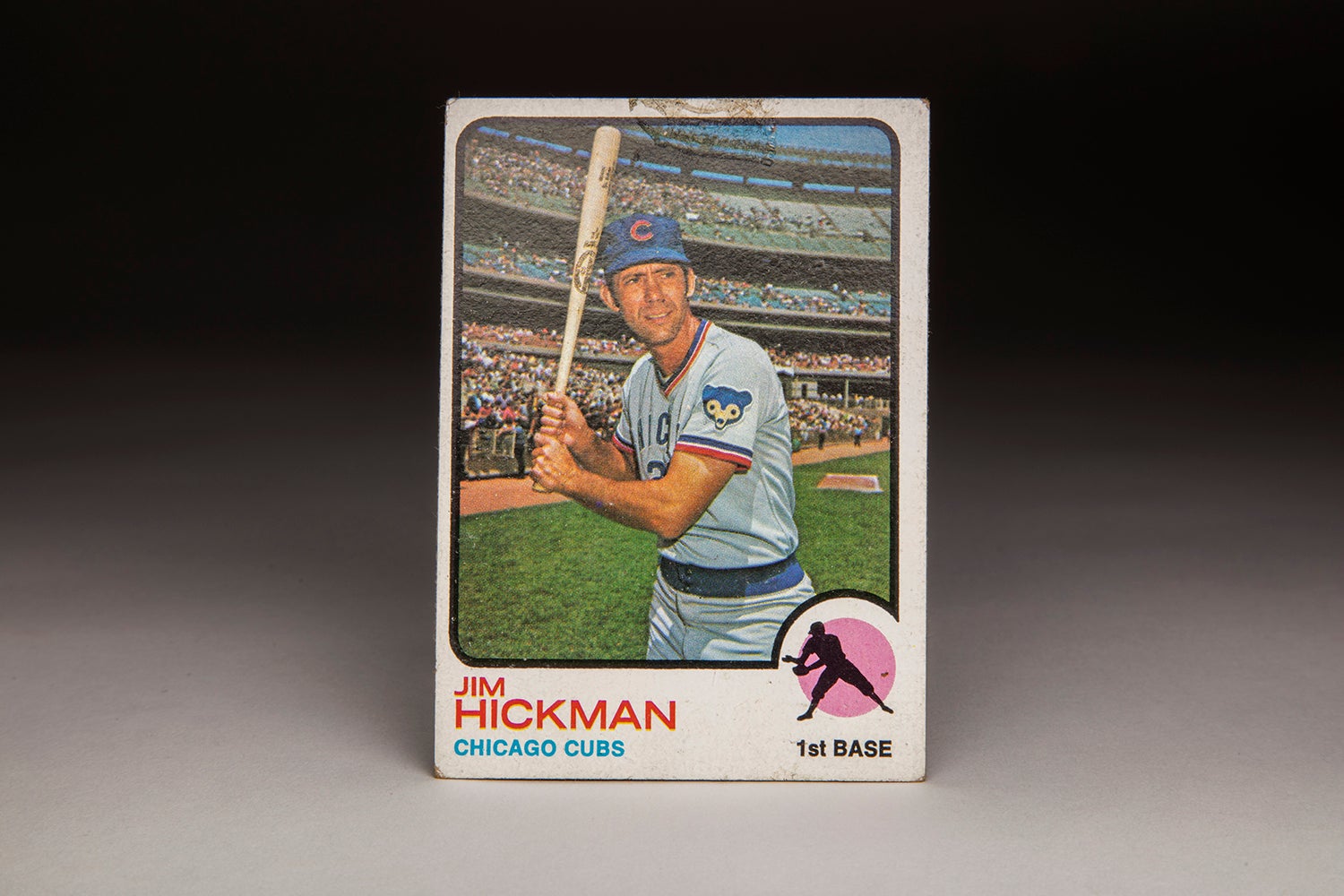- Home
- Our Stories
- #CardCorner: 2017 Topps William Shatner
#CardCorner: 2017 Topps William Shatner
Hall of Fame staffers are also baseball fans and love to share their stories. Here is a fan's perspective from Cooperstown.
For the third consecutive season, Topps is making some headlines with its series of First Pitch cards, paying homage to the celebrities who threw out ceremonial first pitches at big league games in 2016. It’s a group that includes 1980s icon Joan Jett, John Goodman (who once played Babe Ruth in The Babe), Joe Mantegna (star of Criminal Minds), Lou Ferrigno (The Incredible Hulk), and Victoria Justice (for fans of the Disney Channel).
Featuring no artistic border of any color but bearing the logo of the host team, the cards are simple and fun, with a small description of the circumstances surrounding the first pitch on the back of the card. Most importantly, these cards give us all sorts of opportunities to connect the dots between the National Pastime and current events within American popular culture.
Hall of Fame Membership
There is no simpler, and more essential, way to demonstrate your support than to sign on as a Museum Member.
Of all the celebrities to throw out first pitches in 2016, the most interesting, at least to me, was William Shatner. First off, he is 85 years old, which puts him high on the list of the oldest people to ever throw out a ceremonial first pitch at a ballgame. Many celebrities might not want to embarrass themselves by engaging in physical activity at such an age, but Shatner, always willing to poke fun at himself, is clearly not one of those folks. Second, Shatner looks nowhere near 85. I would have guessed 70, at the outside, in trying to assess his age based on physical appearance.
Third, Shatner is one of the celebrities who provide a direct link to my youth in the 1970s, when I grew up in Westchester County watching reruns of shows like Star Trek and The Twilight Zone on WPIX-TV, which happened to be the flagship station of the New York Yankees. After many Yankee games, particularly night games, WPIX would air a rerun of an old episode of Star Trek.
Fifty years after Star Trek debuted on NBC in 1966, Shatner delivered his first pitch at Fenway Park. It did not come easily. Invited by the Boston Red Sox to throw out the pitch before the team’s game on Aug. 12, Shatner strolled to the mound wearing jeans, an unbuttoned Red Sox jersey with a No. 66 on the back, and a cap bearing the Red Sox traditional logo. Doffing his cap as acknowledgement of the crowd, he settled himself on the Fenway Park mound and promptly yanked the pitch, bouncing it in the dirt in front of home plate, where it was scooped up by Red Sox infielder Travis Shaw. Well, that wouldn’t do.
Asking for the ball again, Shatner gathered himself and wound up again, this time throwing a strike, just on the outside corner, where it landed squarely in Shaw’s glove. Hey, when you’re 85, you deserve a second chance, which Shatner capitalized on fully, with decent form and a solid overhand throw to the plate. Nicely done.
Some fans might be wondering about Shatner’s connection to the Red Sox. Why did the organization have him throw out the first pitch? There are two reasons. Shatner’s appearance coincided with the staging of Boston Comic Con, which was taking place that weekend in the city. Logically, the Red Sox decided to hold Comic Con Night on Friday night at Fenway Park. Shatner also has an indirect tie to the city of Boston. Back in the 1990s, he starred as unscrupulous lawyer Denny Crane on the hit show, Boston Legal, a one-hour drama that featured plenty of comedy mixed in with criminal cases. The show, which co-starred James Spader, did well, lasting five seasons on the ABC Network.
As good as Shatner was in performing the duties of a not-so-honest lawyer, that is not the role that most fans remember him for, not by a long stretch. For me, the association with Shatner began with his appearance on The Twilight Zone. Actually, he appeared in two episodes, the first one airing in 1960 and titled “Nick of Time,” in which he plays a young newlywed who is on his honeymoon. His car breaks down, forcing him and his wife to spend some time in a diner, where they begin to play a fortune telling machine. They become addicted to the machine, which tells them more than they want to know. It’s a haunting episode, quietly effective, and one that showcases Shatner’s acting talents in the years before he struck major fame and fortune.
Yet, it’s the other Twilight Zone episode that represented a breakthrough for Shatner. Titled “Nightmare at 20,000 Feet”, it’s arguably the most famous episode in the five-year run of The Twilight Zone. Shatner plays Bob Wilson, a man freshly recovered from a nervous breakdown, who is travelling by plane with his wife. He has a fear of flying, which only exacerbates his fragile mental state. Sitting at his window seat, he peers out onto the wing of the plane, where he sees a strange creature, a “gremlin” if you will, beginning to tear at the inner workings of the plane’s wing. Of course, only Shatner can see the gremlin, which makes his wife and the crew of the plane wonder whether he is suffering a relapse of his emotional troubles.
Shatner doesn’t often reveal the vulnerable side in his characters, but he certainly does so in his portrayal of Wilson. Shatner plays the character to perfection, in full blown panic mode over what he seems on the wing, but also as a sympathetic figure for whom we find ourselves rooting. And when it turns out that Shatner is not hallucinating about the gremlin, we feel as if he is vindicated. He is not crazy, but is rather a hero, someone who actually saved the plane from crashing because he noticed one of the engines being torn to shreds by an unknown monster and forced the pilot to land before additional damage could be done.
As the star of this 1963 episode, Shatner showed himself more than capable of handling a role within the genre of science fiction. Only three years later, Shatner would embark on the sci-fi role that would make his career, the one for which he will always be remembered. From 1966 to 1969, Shatner portrayed the heroic Captain James T. Kirk on the iconic series, Star Trek. Although Star Trek would last only three seasons on NBC, it would become an unquestioned cult classic, gaining a popularity in syndication that exceeded the ratings that it garnered during its initial TV run. It would be difficult to find a TV show with a stronger cult following than Star Trek, even more than 50 years after it made its debut.
Although Shatner’s Captain Kirk would eventually become the subject of parody, mostly because of the stilted cadence that he often used in delivering his lines, he also became the lynchpin to the show, beloved for his strong will and leadership of the U.S.S. Enterprise. Shatner was the perfect fit for the part. Well-built and athletic, he possessed the requisite skills for a physically demanding role that often asked him to engage in fights. His charisma, along with his willingness to run the emotional gamut, made Captain Kirk a favorite. It’s no wonder that he went on to star in a long series of Star Trek films that spanned from 1979 to 1991, Even as the actor put on weight and began wearing noticeable hair pieces, he continued to give the character of Kirk credibility and charm. Numerous Star Trek incarnations have been introduced since the original series, including the popular portrayal of Captain Picard by Patrick Stewart, but it is Shatner’s characterization of Kirk who has remained the standard bearer for the franchise.
While Shatner’s many portrayals of Kirk have become the signature of his career, they certainly don’t represent the sum of his work. After all, this is a man who has 234 screen credits to his name, if we include both film and TV appearances. He has appeared in sci-fi, horror, crime dramas, and comedies, and even found time to do another long-running TV series in T.J. Hooker, which ran during the first half of the 1980s. Along the way, he has gained a reputation as a man willing to poke fun at himself, which he often does during his public appearances at conventions and comic shows.
Of all of Shatner’s film and TV credits, there is one that has a direct connection to baseball. In 2016, the MLB Network hired him to serve as the narrator of a documentary film, The Colorful Montreal Expos. As a native of Montreal, and as an actor whose narrative speaking style has always made him distinctive, Shatner became the ideal choice for the project. With Shatner’s melodious voice providing the backdrop, several Hall of Famers appeared in the documentary, including Gary Carter, Andre Dawson, Pedro Martinez, and one of the 2017 electees, Tim Raines.
With his appearance at Fenway Park last summer, Shatner has now thrown out ceremonial first pitches on two occasions. His first occurred in August of 2012, when the Dodgers asked him to throw out the first pitch as part of “Star Trek Night” at Dodger Stadium. As the Dodger Stadium organist played the original Star Trek theme, Shatner sported a Dodgers jersey with the No. 32 (the number of Sandy Koufax) and fired a strike to catcher Matt Treanor.
Over the last five years, Shatner has delivered three ceremonial first pitches, with two making it into the strike zone. That’s an impressive level of accuracy for a man in his eighties operating on an artificial hip. Clearly, he’s a man still capable of throwing out a first pitch at a ballpark near you, capable of boldly going where no man has gone before.
Bruce Markusen is the manager of digital and outreach learning at the National Baseball Hall of Fame











